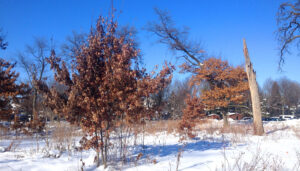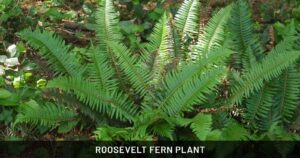“Before exploring options for ‘Free Tree Removal for Veterans,’ you can estimate the cost of tree removal using the calculator below.”
Introduction
Tree removal can be a major challenge for many property owners, and it often comes with a high cost. For veterans who might be living on a fixed income or who are facing health challenges, this can be a financial burden. Fortunately, there are programs and resources that can assist veterans in accessing free or low-cost tree removal services. This guide explores the different options available to veterans, how to apply for assistance, and the steps to take to make sure your property is safe and well-maintained.
Why Veterans May Need Tree Removal Services
Veterans might require tree removal services for various reasons:
- Property Safety: Overgrown or unstable trees can pose serious risks, such as falling branches or potential damage to homes, power lines, or vehicles.
- Health and Accessibility: Older or disabled veterans may have difficulty managing yard work, making it necessary to seek assistance for tasks like tree removal.
- Storm Damage and Emergencies: Natural events like hurricanes, tornadoes, or storms can cause trees to become damaged and require immediate removal for safety.
Options for Free or Low-Cost Tree Removal for Veterans
1. Government Assistance Programs
The federal government, along with state and local programs, provides several resources for veterans, particularly those who are disabled, elderly, or facing financial difficulties. Here are some avenues to explore:
- U.S. Department of Veterans Affairs (VA): While the VA itself does not directly offer tree removal services, veterans may be eligible for home modification grants, which can sometimes be used for essential property maintenance, including tree removal. Programs include:
- Specially Adapted Housing (SAH) Grants: For veterans with service-connected disabilities, these grants help make homes more accessible and safe.
- Home Improvements and Structural Alterations (HISA) Grants: These grants provide funding for necessary home modifications, including structural changes that could involve tree removal for safety or accessibility.
- Community Development Block Grants (CDBG): At the state or city level, CDBG funds can be used to assist low-income veterans with property repairs, including tree removal in some cases. Each local government decides how to allocate these funds, so veterans should inquire with their city or county community development office.
2. Non-Profit Organizations and Veteran Service Groups
Numerous non-profit organizations and veteran service groups are dedicated to assisting veterans with home maintenance and other needs. Here are some examples:
- Purple Heart Homes: This organization assists disabled veterans in need of home modifications. While their primary focus is on accessibility, they may also offer resources or connections for necessary tree removal.
- Operation Homefront: Focused on helping military families with critical financial needs, this organization sometimes provides grants for home maintenance emergencies, which may include tree removal.
- Habitat for Humanity: Although not veteran-specific, Habitat for Humanity often partners with veterans to help with home repairs and modifications. Their services may include tree removal, especially if it’s deemed a safety or accessibility issue.
3. Local Veteran Assistance Programs
Many states and localities have dedicated programs specifically for veteran home maintenance. Reach out to the following to inquire about potential assistance with tree removal:
- State Veterans Affairs Offices: Every state has its own VA office, which often administers state-specific benefits and assistance programs for veterans.
- Veteran Community Organizations and VFW Posts: Veterans of Foreign Wars (VFW) posts and other community veteran groups may offer volunteer-based services for tree removal or can help connect veterans with available resources.
How to Approach for Free Tree Removal
- Assess Your Need and Gather Information
Before applying for assistance, make a clear assessment of your tree removal needs. Take photos of the tree(s) in question and note any safety concerns, such as proximity to your home, damage from storms, or potential hazards to utility lines. - Check Eligibility for Veteran Benefits
Gather all relevant documentation to demonstrate your veteran status and any other eligibility criteria for specific programs. This may include:
- Proof of military service (e.g., DD-214 form)
- Identification (e.g., VA health card, state ID)
- Proof of homeownership or rental status (some programs apply to renters as well)
- Documentation of any disabilities or financial constraints if applying for needs-based assistance
- Contact Your Local VA or Community Office
Start by contacting your local VA office, which can direct you to applicable grant programs, state benefits, or community organizations that provide tree removal services. You may also reach out to your local community development office to inquire about any municipal programs. - Reach Out to Non-Profits or Veterans Service Groups
Search for local veteran-focused non-profit organizations or charities. Often, these groups have partnerships with contractors, arborists, or volunteers who can assist with tree removal services.
Examples of Tree Removal Assistance for Veterans
Example 1: Disabled Veteran in Florida
John, a disabled veteran living in Florida, noticed that a large tree near his home was damaged after a hurricane and posed a risk to his property. Through his state’s VA office, he learned about a home improvement grant available for disabled veterans. The grant covered the full cost of tree removal and even allowed for modifications to make his yard more accessible.
Example 2: Elderly Veteran in Ohio
Sarah, an elderly widow of a veteran in Ohio, struggled to maintain her yard due to a physical disability. Through a local non-profit organization that partners with the VFW, she was able to access free tree removal services provided by volunteers in her community.
State Guidelines and Special Assistance Programs
Each state has its own programs and guidelines for veteran assistance. These programs may differ in terms of qualification criteria and available services. A few notable examples include:
| State | Veteran Assistance Program | Details |
|---|---|---|
| Texas | Texas Veterans Land Board (VLB) | Offers home improvement grants that may cover tree removal costs. |
| California | CalVet Home Loans | Provides financial assistance for veterans to make property repairs. |
| Virginia | Virginia Wounded Warrior Program | Offers a variety of assistance services, including home maintenance. |
Be sure to contact your state’s veteran affairs office to learn about specific programs available in your area.
Steps to Ensure Safe and Affordable Tree Removal
- Consult a Certified Arborist: If you believe you require tree removal services, consult with a certified arborist to get a professional assessment of the tree’s condition and potential risks.
- Verify Assistance Qualifications: Before allowing any work to commence, confirm that any assistance you receive, either from government programs or non-profit organizations, is provided by licensed and insured contractors to prevent liability issues.
- Seek Multiple Quotes: If applying for grants or funding assistance, it might be beneficial to obtain multiple quotes for the tree removal service to compare costs and ensure you’re receiving fair pricing.
Conclusion
Veterans have access to numerous resources and programs that can assist with tree removal, especially when it’s necessary for safety, health, or property maintenance. By leveraging the right government grants, non-profit services, and local programs, veterans can obtain free or reduced-cost tree removal without bearing the full financial burden.
For more information on veteran services and assistance programs, visit:
- U.S. Department of Veterans Affairs (VA)
- Veterans of Foreign Wars (VFW)
- National Resource Directory for Veterans
Remember to explore all options available to you as a veteran, and don’t hesitate to seek assistance from community organizations and veteran service groups dedicated to supporting your well-being and property safety.




